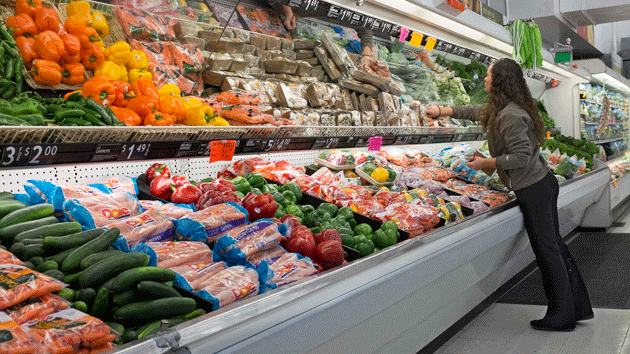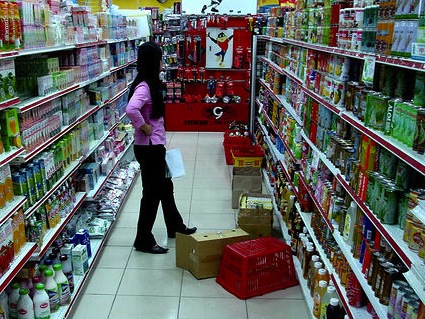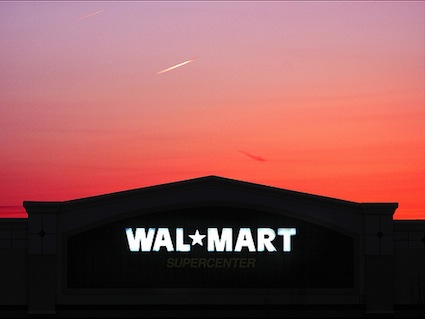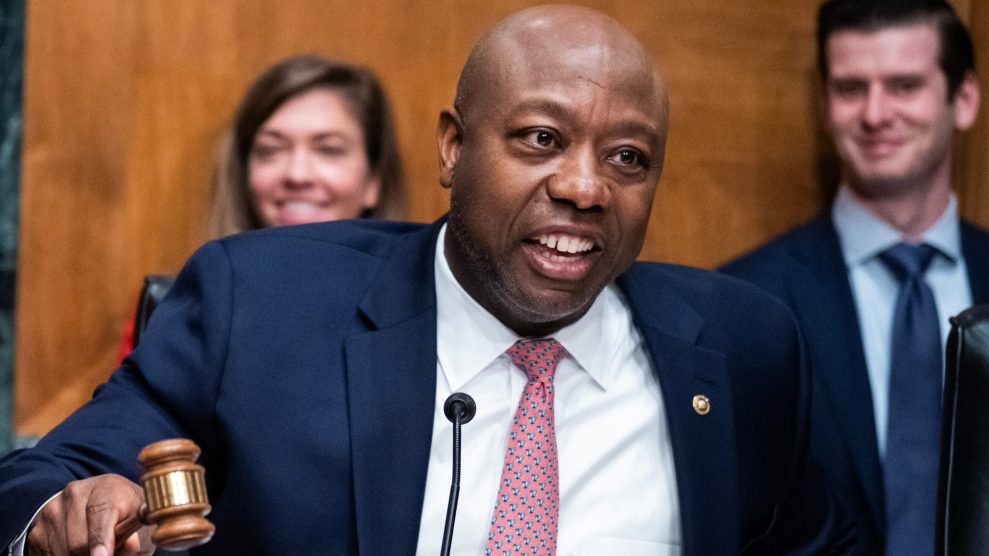
Dennis Chamberlin/FERN
How much of Walmart’s revenue comes from its shoppers’ food stamps? The store isn’t required to say. But a January Court of Appeals ruling could change that. If the unanimous decision by the 8th Circuit’s panel of three judges holds, the United States Department of Agriculture will be required to release data indicating exactly how much of the Supplemental Nutrition Assistance Program’s $80 billion in annual sales is paid to specific retailers and individual stores.
The Argus Leader, a Sioux Falls, South Dakota, paper, brought suit against the USDA in 2011 after the agency denied a Freedom of Information Act (FOIA) request seeking data on USDA’s annual payments to grocers, gas stations, and other retailers in the SNAP program. The USDA routinely tracks the payments, which retailers process as they do credit cards: The stores accept recipients’ Electronic Benefits Transfer cards as payment, and in turn the government pays the stores.
Stephanie Bengford, the US attorney representing the USDA, argued that under federal code, specific details about SNAP revenue should be considered private business information. In the appeals court opinion, Chief Judge William Jay Riley held that the USDA had misread the code, and issued a decision in favor of the Argus. The agency has until April 28—90 days from the January decision—to file an appeal with the US Supreme Court. If the USDA does not file an appeal, the case will likely return to the District Court.
The Argus case follows a 2010 incident in which Massachusetts officials threatened reporter Michael Morisy of Muckrock.com with fines or imprisonment for publishing SNAP retailer sales data obtained from the state’s welfare agency under a basic information request. The state released the data, but when Morisy mapped out sales by store and published it online, the agency said the information had been released erroneously and demanded that he remove it, citing the same statute on which the USDA centered its Argus case.
Morisy is one of three reporters who have succeeded in obtaining SNAP sales data to date. Earlier this month, Marketplace‘s Krissy Clark reported that Walmart executives estimate that 18 percent of all SNAP sales are conducted at its stores—about $13 billion annually. In 2011, reporters at the Tulsa World found that Walmart accounted for nearly half of all SNAP spending in Oklahoma.
Food retailers contend that sales data is protected by a FOIA exemption for private business information, regardless of who is paying the bill. Laura Strange, a spokeswoman for the National Grocers Association, believes that sales through SNAP are proprietary information. “Disclosure of this private information could give competitors an unfair advantage,” Strange wrote in an email.
Indeed, SNAP is an increasingly lucrative business. The program has boomed, with sales nearly quadrupling in the last decade. Today 48 million Americans make use of the benefit, which frequently supplements low wages. In Walmart’s annual SEC filing this January, America’s largest grocer listed changes to SNAP among its potential financial risks. Dollar stores expanded their grocery departments during the recession, enabling them to capture sales through SNAP, and even higher-end stores are beginning to pay attention to the program. In the last year, Whole Foods Market has opened stores in mixed-to-low-income urban neighborhoods with large SNAP populations in Detroit and New Orleans, and has plans for three more, including one in New York City’s Harlem.
Currently, the USDA releases data on food stamp spending by zip code and store type. Advocates and developers often use that information in efforts to expand food access, a cornerstone of first lady Michelle Obama’s “Let’s Move” initiative. In low-income neighborhoods, where SNAP sales can account for more than half of grocers’ sales, the program’s monthly payment schedule can drive store decisions around staffing and stocking at those stores.
James Johnson Piett, a developer and consultant working nationwide on low-income supermarkets and healthy corner stores, says that retailer data would make it possible to judge whether new, government-subsidized stores are serving SNAP shoppers. “We’re working kind of blind when it comes to empirical data,” he says.
The Argus case could also lay the groundwork for the release of other SNAP data that retailers have fought to keep private: what SNAP recipients buy with their benefits. Last year, food retailers lobbied intensely and successfully to sideline a farm bill amendment proposed by Rep. Thomas Marino (R-Pa.) that would have established a pilot program requiring retailers to track what SNAP shoppers, as a whole, bought with their benefits. Many stores already track shopper sales through loyalty cards, and public health experts trying to lower obesity and diabetes rates say similar data on food stamps would be a boon to their efforts.
Food retailers were having none of it. “We DO NOT want a freaking vote on it,” Greg Ferrara, a vice president of the NGA, wrote in an email obtained by Mother Jones. Ferrara added that Marino’s amendment “will expose [grocers] to significant new attacks from the left and right if this becomes law.” Emails from the NGA argued that the requirements were too expensive and referred to the proposal as the “Marino Food Surveillance Amendment,” likening it to the NSA.
With increased government transparency, public health, and food access all in play, Jonathan Ellis, the Argus reporter, says the stakes are high. “Access to…this kind of data, that talks about who’s making what off an $80 billion program,” he says, “is just important for the debate that we have in a democracy about how to best use our resources.”
And retailers who oppose the change, said Mari Gallagher, a Chicago-based food access researcher, do have a way out: “If retailers don’t want that information revealed, then they don’t have to be part of the program.”
This article was produced in collaboration with the Food & Environment Reporting Network, an independent, nonprofit news organization producing investigative reporting on food, agriculture, and environmental health.
















